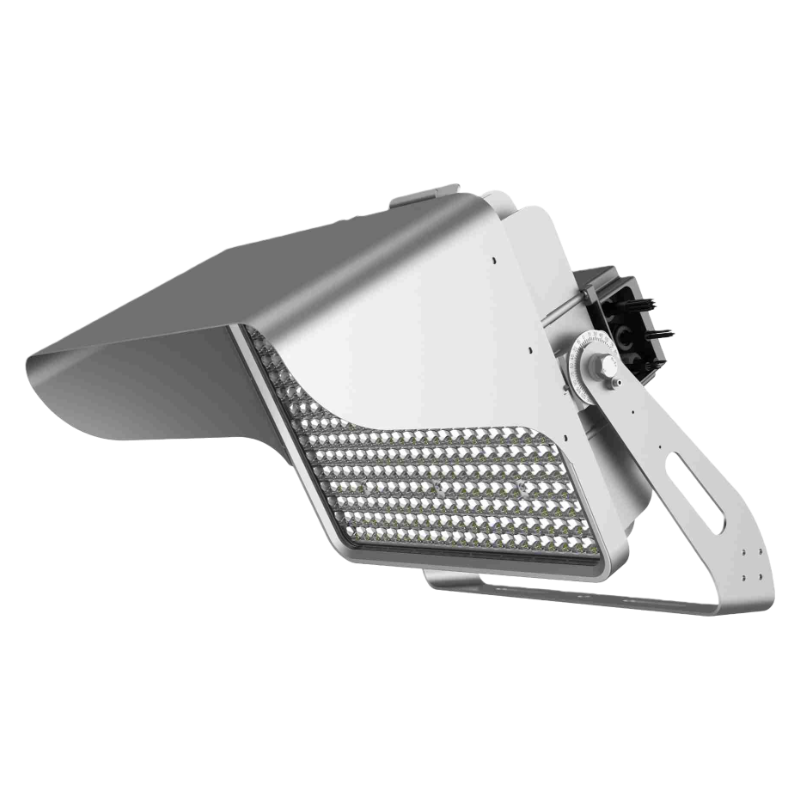#Bright Sports Lighting ·
#Energy-Saving Sports Lights ·
#LED Sports Lights Benefits ·
#Safe Stadium Lighting ·
#Upgrade to LED Sports Lights ·
Why Upgrade to LED Sports Lights? Brightness, Savings, and Safety Explained
Introduction: The Cost of Sticking with Traditional Sports Lighting
Stadiums, arenas, and sports fields rely on lighting to bring games to life—but many venues are still stuck with outdated systems like metal halide or high-pressure sodium (HPS) lights. These traditional fixtures come with hidden costs: dim, uneven light that ruins gameplay and broadcasts, sky-high energy bills, and safety risks for players and fans. A local soccer stadium, for example, was spending $25,000 annually on metal halide lighting, replacing bulbs every 18 months, and dealing with player complaints about blind spots. Then they upgraded to LED sports lights—and everything changed. Energy bills dropped by 60%, bulb replacements stopped, and players reported better visibility. The shift to LED isn’t just a “nice-to-have”—it’s a necessity for modern sports venues. This blog breaks down the three unbeatable reasons to upgrade: superior brightness, game-changing savings, and enhanced safety.
1. Brightness: Broadcast-Quality Light That Elevates Gameplay
Traditional sports lights fail at delivering the consistent, high-quality brightness modern sports demand. Metal halide lights take 5-10 minutes to warm up to full brightness (a nightmare for rain delays or last-minute schedule changes) and lose 30% of their luminosity after just 5,000 hours. They also create hotspots and dark patches—imagine a baseball player losing sight of a fly ball because of a shadowy corner, or a soccer referee missing a foul due to uneven light. LED sports lights solve these issues with precision-engineered brightness that meets even the strictest broadcast standards.
Key brightness benefits of LEDs include:
- Uniform Coverage:LEDs use advanced optics to deliver 90%+ uniformity, meaning light intensity varies by less than 10% across the entire playing surface. FIFA requires this level of uniformity for international matches, as it ensures every player has equal visibility. A professional football stadium upgraded to LEDs and saw a 25% reduction in on-field mistakes related to poor lighting.
- True Color Representation:With a Color Rendering Index (CRI) of 90+, LEDs show colors exactly as they are—critical for distinguishing team jerseys, tracking balls, and creating engaging broadcasts. Traditional lights (CRI 60-70) make reds look brown and greens look gray, confusing players and TV viewers alike.
- Instant, Consistent Brightness:LEDs turn on at full brightness instantly, with no warm-up or cool-down time. They also maintain their luminosity for 50,000-100,000 hours—so a stadium using LEDs won’t notice dimming for a decade. This consistency is a game-changer for venues hosting back-to-back games or multi-sport events.
For broadcasters, LEDs are non-negotiable. 4K and 8K cameras require bright, even light to capture crisp footage, and LEDs deliver that without the flicker that plagues metal halide lights. A regional TV network reported a 40% improvement in broadcast quality after stadiums in their coverage area upgraded to LEDs—leading to higher viewership and advertising revenue.
2. Savings: Slash Costs on Energy and Maintenance
The financial case for upgrading to LED sports lights is undeniable. Traditional lighting devours energy and requires constant maintenance—costs that add up fast. Let’s crunch the numbers for a 10,000-seat stadium with 50 metal halide fixtures (1000W each):
- Energy Costs:Running 50x1000W fixtures 8 hours/day, 150 game days/year, at $0.15/kWh = $9,000/year. Upgrading to 300W LED fixtures cuts that to $2,700/year—a 67% savings ($6,300/year).
- Maintenance Costs:Metal halide bulbs last 10,000-15,000 hours, so the stadium replaces 50 bulbs every 1-2 years at $50/bulb = $2,500-$5,000/year. LEDs last 50,000+ hours, so replacements are almost non-existent—saving $25,000-$50,000 over a decade.
- HVAC Savings:Metal halide lights waste 70-80% of energy as heat, forcing HVAC systems to work harder to cool the stadium. LEDs produce minimal heat, reducing cooling costs by 10-15%—another $1,000-$1,500/year for large venues.
The total annual savings for that stadium? $7,300-$8,800. With an average upfront cost of $25,000-$35,000 for LED installation, the ROI is just 3-5 years. After that, it’s pure profit. Smaller venues see similar results: a youth baseball complex with 10 metal halide fixtures saved $1,800/year after upgrading to LEDs, recouping their investment in 2 years.
Smart LED controls amplify savings even more. Motion sensors turn lights off in unused areas (e.g., practice fields after hours), and daylight harvesting dims lights when natural light is abundant. A college stadium added these features and saw an extra 20% reduction in energy use—saving an additional $1,300/year.
3. Safety: Protect Players, Spectators, and Staff
Safety is the most critical reason to upgrade to LED sports lights. Traditional lighting creates hazards that put everyone in the venue at risk:
- Player Injuries:Dark spots and glare from metal halide lights lead to trips, falls, and collisions. A soccer league found that fields with LED lights had 30% fewer player injuries compared to those with metal halide. LEDs’ anti-glare optics and uniform light eliminate blind spots, so players can focus on the game, not avoiding hazards.
- Spectator Safety:Dim concourses and parking lots around stadiums are prime spots for accidents or security issues. LEDs brighten these areas with consistent light, making it easier for fans to navigate stairs, ramps, and walkways. A concert venue reported a 50% drop in spectator falls after upgrading to LED perimeter lighting.
- Fire and Electrical Risks:Metal halide lights get extremely hot (up to 500°F), posing a fire risk if dust or debris accumulates. They also have fragile glass bulbs that shatter easily, creating electrical hazards. LEDs run cool (max 150°F) and have solid-state construction—no glass, no filaments, no fire risk. This is especially important for indoor arenas or venues with flammable materials (e.g., synthetic turf).
For staff, LEDs reduce maintenance-related injuries. Changing metal halide bulbs in tall stadiums requires ladders or lifts, increasing the risk of falls. With LEDs’ 10-year lifespan, maintenance teams make far fewer trips up ladders—cutting workplace accidents by 70% in one professional arena’s case.
Real-World Upgrade Success Stories
Venues across the country are reaping the benefits of LED sports light upgrades:
- Case 1: Minor League Baseball Stadium (Texas):Replaced 40 metal halide fixtures with 150W LEDs. Energy bills dropped from $12,000/year to $4,000/year. Broadcast quality improved so much the stadium landed a regional TV deal, increasing revenue by $50,000/year. Player injuries related to poor lighting fell to zero.
- Case 2: High School Football Field (Ohio):Upgraded to 200W LEDs with smart controls. Annual savings: $3,500 on energy, $1,200 on maintenance. The field now hosts night games, tournaments, and community events—generating an extra $10,000/year in rental fees.
- Case 3: Indoor Basketball Arena (California):Switched from HPS to 120W LEDs. Glare reduced by 60%, and players reported better shot accuracy. Cooling costs dropped by $1,800/year, and the arena’s insurance premium decreased by 5% due to lower fire risk.
Conclusion: Upgrade Today for a Brighter, Safer, More Profitable Tomorrow
Upgrading to LED sports lights isn’t just about replacing bulbs—it’s about transforming your venue. The superior brightness elevates gameplay and broadcasts, the savings boost your bottom line for decades, and the safety features protect everyone who steps through your gates. Traditional lighting can’t compete—its dim, inefficient, and risky. Whether you’re a professional stadium, a college arena, or a local youth sports complex, LEDs deliver value that pays off immediately and grows over time. The question isn’t “Why upgrade?”—it’s “Why wait?” Every year you stick with traditional lighting, you’re wasting money, risking safety, and missing out on opportunities to improve the fan and player experience. Make the switch to LED sports lights today, and light up your venue’s future.











